Arts
Fading Ghungroos

Bollywood is drowning out classical dance.
Hear the sound of ghungroos, the tinkling of bangles and excited murmurs. The stage is set for the arangetram of a Bharatnatyam student. It’s time to validate the sweat and toil of seven years. The lights are dimmed in the hall and the music begins. But instead of the sitar and mridangam, the hall reverberates with the popular Hindi movie song “Dola Re” from King Khan’s film Devdas. The student performs her arangetram to the song and her career is launched as a Bharatnatyam dancer.
There is rousing applause. But classical dance aficionados are shocked. One person shaken to the core is Vijaylaxmi, an internationally renowned Bharatnatyam exponent and teacher for the past 25 years in Chicago. Vijaylaxmi teaches and choreographs Bharatnatyam, Kuchipudi, Mohiniattam and Odissi styles of dancing. Over 24 years she has taught several thousand students in the Chicago area. She says, “Arangetram is the first stage performance by a student to dedicate her art at the feet of the lord. It is like Satyanarayan Puja, a very spiritual dance. To have a movie song at the arangetram is the worst insult to the art.” Equally insultingly, a photograph of God was at the back of stage instead of the front, as is customary. Hindi film performances pervade Indian dance competitions and public events. During religious festivals like Diwali, Mahashivratri or Durga puja, after having their fill of chaat-paapri, the audience often sits down for cultural performances, featuring kids ranging from 5 to 20 years gyrating to “Beedi Jalaaye Le” and “Kajra Re” numbers. Indeed, “Kajra Re” is something of a reigning Indian festival anthem. Classical dance forms, like Bharatnatyam, Kathak, Kuchipudi and Odissi, are increasingly taking a back seat to film dance at Indian dance schools that have mushroomed all over the United States.
Padma Khanna, the celebrated Kathak dancer and actress (“Kaykeyi” of television serial Ramayan fame), is pained by the slow death of Indian classical dance in the Indian American community. Khanna established her dance school Indianica in New Jersey in 1996. She says: “I was surprised that Indians based in U.S. did not know what Kathak was. I had to explain that it is a North Indian classical dance form. Then I would give references of my guruji Padmashree Gopi Krishna and the film Jhanak Jhanak Payal Baje and Rekha in film Umrao Jaan. To showcase my art, I had to perform at local shows. It is almost like I had to sell my kala. Only then people realized what Kathak was all about.” During the past 11 years, Khanna has tried hard to instill in her students her love for classical dance. But, she laments, in that period only nine of her nearly 600 students performed their Rang Pravesh Pushpanjali, (equivalent to what is called Arangetram in Bharatnatyam) which requires completing the 7-year Kathak course. The others either learnt the basics to improve their movie dance choreography or left because they did not have the patience and dedication the art form demands. Says Khanna: “Initially, I wanted to stick to the pure form of Kathak and teach my students the same. Pretty soon, I realized nobody was interested. In the end, I had to adapt to the student’s demands and add movie dance to my school to survive. But I still make it compulsory to learn the basic Kathak for at least four months before I initiate the student into movie dance. Even then it is difficult to keep the student’s interest alive.”
Many Indian American parents are proud when their children dance to popular film numbers, wearing matching movie costumes, privately patting themselves for keeping their culture alive in the second generation. However, Supriya Desai, a well known dance exponent who was awarded the “Karnataka Kalashree” by the Karnataka Music and Dance Academy, says, “By having fun with the Indian community and film dance performances, we are not preserving our culture. We are in denial if we believe this.” Khanna concurs: “Parents are absolutely at fault here. They should tell their children that Indian culture is different and film world is different. I belong to the film industry, and I am appalled at the misconception about our culture and the obsession kids have here for the film world. I tell them don’t mislead your children into believing movie dance is Indian culture. It is adapted culture.” She has argued with many parents about teaching their children movie dance. “Parents come to me with demands that their children be put into stage performances. I have a hard time explaining that all movie dances are based on the basic moves, postures and grace of classical dance. It is only then that they relent. Agar parents aise hain, to bachchon ko kya kahein? (If parents are like this, how can we blame the children?)”.
Vijaylaxmi echoes her criticism. Her school Natraj Dance Academy in Chicago only offered classical dance until three years ago. Under pressure from parents and students she introduced one semi-classical dance class in her four locations. Now every student wants to be a part of it. Desai emphasizes the classical dance heritage to her students, explaining that it can embrace the audience with the depth and fiery sensuality of the art form. In a world of instant gratification, where movie dance provides an easier path to instant recognition, that is hard. The pressure on kids to succeed academically as well as to have a wide range of extra curricular interests limits their ability to dedicate themselves to the rigors of classical dance. Khanna says, “I can’t help but sympathize with some of my students. They come to my class rushing from a sports or music lesson and are already physically and mentally tired. They just throw their hands and feet in some posture and are not bothered about the grace or the finishing touch required. I am sure it must be the same in other classes they attend.” Punam Kumar has been teaching Kathak for the past 25 years in Cypress, Calif., at her dance school Shivam Arts, which has popularized fusion dance forms. Kumar says, “Every student loves movie dance, there is no doubt about it. Some join my classes to get tips, learn new body moves, angle of waist and eyes to add to their Bollywood choreography.” She makes sure her students at least create their own Kathak choreography for film songs, instead of blindly copying the moves.
To keep the interest in classical dance alive in her students, Kumar developed fusion dance forms. She choreographs Kathak to world music. Seeba Bhatia, a Kathak student in Los Angeles, California finds the fusion art form very agreeable: “I have been a Kathak student for the past 6 years and want to pursue it seriously. But I find that neo-Kathak holds a lot of appeal too, which is combining Kathak with western dance styles. There are many such new styles coming up and I would like to try them out as well.” The market for fusion classical dance forms is stronger than for classical dance. Ruupa Raman, a Bharatnatyam dancer in Chicago, learnt the art for 20 years. During the past five years she has held many performances, but, says it has not been easy: “Finding opportunities and occasions to perform pure classical dance is not that simple. Most event organizers are just not interested. Then there have been times when more than half the audience either walks away or is busy talking during classical dance performance. All this is extremely disheartening.”
Khanna is critical of schools that compromise the classical forms. She says, “I have had students from a famous dance academy that proclaims to teach Kathak dance as well as movie dance, and has international branches. Not one of her numerous students that I have taught knew beyond the very first Kathak footwork 1-2-3-4 or the film Umrao Jaan dances. And these were students who had been at big Bollywood events in U.S. for more than 6 months. They come with the supreme confidence of having performed on stage for a year, but don’t even know the basic choreography rules, like coordination and importance of expression during any performance.” Corporate sponsors drive the demand at entertainment, cultural and religious events at which Bollywood’s mass appeal easily trumps that of Kathak and Bharatnatyam. Desai says she has stopped attending many Indian competitions and cultural events, which are geared toward popular dance forms. Desai, who was chairperson of the Hindu Temple in Raleigh, N.C, says she was “popularly unpopular” for her strong views on the subject. She traces the demand for movie dances to the 1995 film Khalnayak and the song “Choli ke Peeche Kya Hai.” She has defied the tide and does not admit students interested only in movie dance. She says that at least her school will not be a springboard for Bollywood latke-jhatke.
Desai as well as Vijaylaxmi are critical of dance teachers who allow film dances during arangetram or allow stage performances by students before they are ready. Some of the teachers are globe-trotters with little time for students, they complain. In turn, students grow up learning the “tricks of the trade,” viewing classical dances as mere stepping stones to film dances and a stage career. Says Vijalaxmi, “I am not biased against any culture, but I have noticed that certain teachers from the Western part of India are treating classical dance as just a form of entertainment. South Indian teachers understand and grow up with the classical dance culture. Bharatnatyam, Kuchipudi, Mohiniaattam and Kathakali are dance forms we revere deeply. To defy the tradition revolving around these is sacrilege in our eyes.” A recent recital in New York City by the Kathak legend Pandit Birju Maharaj captures the dismal state of classical Indian dance in America. Even though free passes had been distributed for the event, the auditorium was half empty for Birju Maharaj’s poetry in ghungroos. |


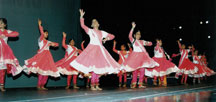
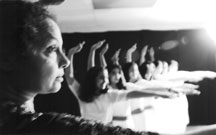
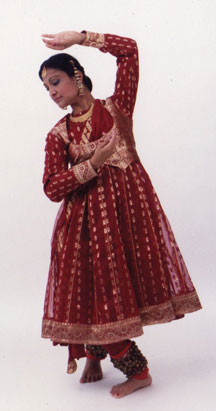
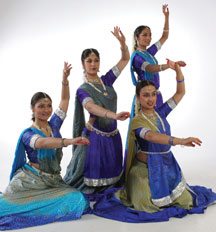
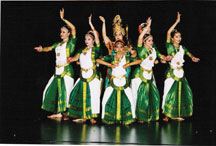
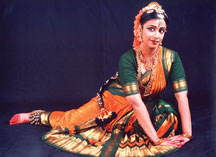
You must be logged in to post a comment Login